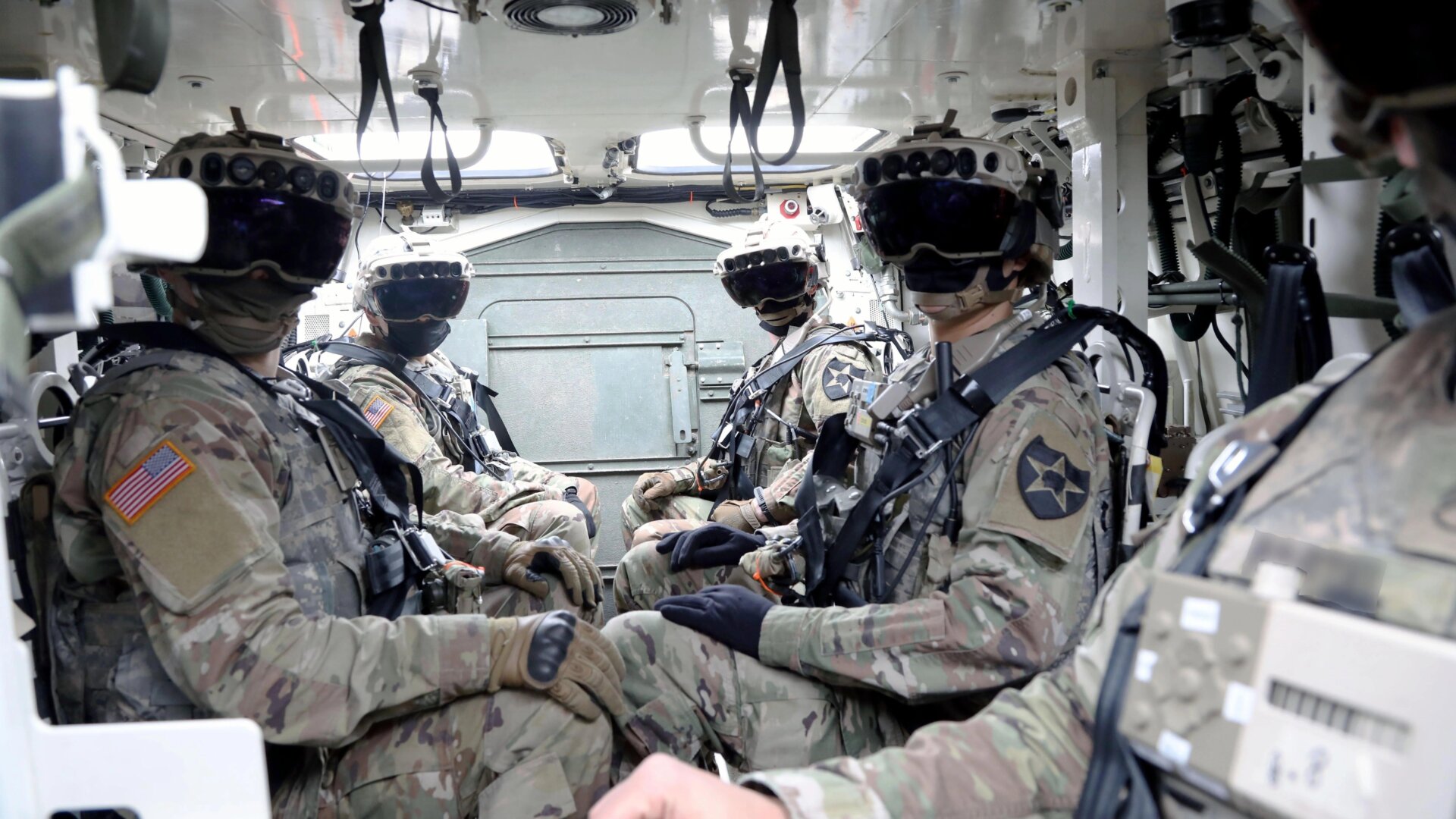Congress, in all its wisdom, declined to give the Army an additional $400 million in its 2023 budget that the army planned to use to buy an additional 6,900 AR combat goggles developed in partnership with Microsoft.
Bloomberg first reported on the loss of funding for the ongoing HoloLens project Thursday. The $21.88 billion initiative established in March 2021 was meant to create mixed reality called “Integrated Visual Augmented System” headsets. The goggles were reportedly designed to offer soldiers a kind of heads up display, aiming assistance, as well as thermal imaging capability.
The initial funding was meant to create 120,000 first generation headsets, and it seems military officials are still working their way through that initial request. Last week, officials told ArmyTimes that the Army has procured just 5,000 models of its 1.0 design and another 5,000 of its 1.1. The 1.0 edition included navigation and weapons site camera linkage, while the 1.1 version included a low-light sensor. Despite the ongoing work, the House Appropriations Committee has been skeptical about the $400 million procurement request for months before Congress passed the $1.7 trillion 2023 budget last month. The Senate Appropriations Committee had previously recommended reducing the IVAS procurement request from around $400 million to just $50 million.
Initial tests showed soldiers were sour on the technology. A leaked internal Army report showed that the HoloLens tech simply made soldiers sick when worn for any extended length of time. Those testing the tech also complained about headaches and eye strain. Soldiers using the goggles also noted the tech “would have gotten us killed” because of all the LED lights making the goggles visible from hundreds of meters away.
Still, this isn’t the end of Microsoft’s contract by any means. An Army spokesperson told Bloomberg that lawmakers have moved $40 million around in the budget which will allow the Army to develop a new model of the goggles, ones that hopefully won’t make soldiers want to vomit.
Despite the loss of some congressional funding, the Army’s, at least publicly, far from done with HoloLens tech. The Army has already put down $125 million for Microsoft to develop a “1.2” version of the IVAS system thanks to a Development Task Order the Army awarded the company Dec. 20. This order was placed just a few days before Congress passed the full 2023 budget.
The Army seems aware of public scrutiny for their combat goggles. The task order mentions that they conducted 30 soldier tests using more than 1,000 soldiers giving more than 100,000 hours of feedback, though that’s significantly more than previously reported by Business Insider and Bloomberg. The release mentioned the new IVAS systems should begin field tests in September, and the Army promised 1.2 will make the device much more usable, including a lower profile HUD and better wearability.
Importantly, the Army’s press release also mentioned that the service branch will place delivery orders for more IVAS 1.2 production after testing. Gizmodo reached out to the Army for additional comment, though in response we were provided another copy of the Task Order press release.
Gizmodo reached out to Microsoft for comment, though the company did not provide a response before deadline. We will update the story when we hear more.
Last year, the Department of Defense’s Office of the Inspector General released an audit of how the Army was developing the IVAS system. The office determined that the Army wasn’t determining a minimum acceptance level for if the goggles would meet soldiers’ needs, something that could “result in wasting up to $21.88 billion in taxpayer funds to field a system that Soldiers may not want to use or use as intended.”
The U.S. military’s budget represents the largest portion of U.S. discretionary spending, by far. In the recently passed National Defense Authorization Act, Congress allotted $816.7 billion to the Department of Defense.
Of course, this denied $400 million doesn’t change the Army’s massive budget and its continuing focus on incorporating modern technology into weapons systems. Congress’ funding package includes a $2.7 billion science and technology budget with a partial emphasis on “soldier lethality,” for a continuing emphasis on artificial intelligence and machine learning for the military intelligence “kill chain,” AKA military decision making.














